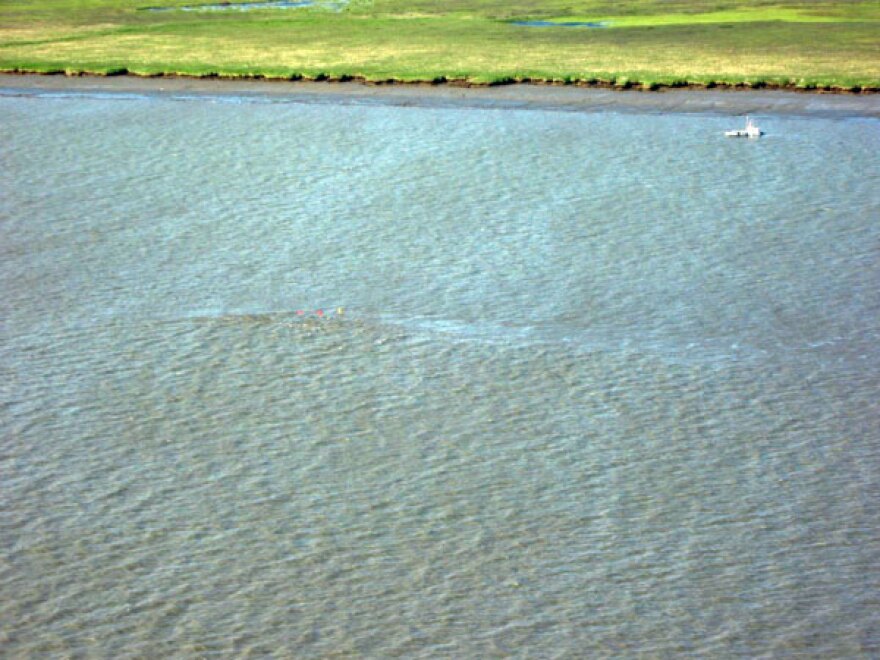Port side vents reported plugged; now divers are turning their attention to the Lone Star's starboard side, currently buried in the mud.
There was no fuel sheen spotted around the Lone Star during Tuesday’s overflight by federal and state officials. Divers are working to seal fuel vents on the starboard side which is buried in the mud. Despite the progress, the fishery remains closed.
Divers on the scene of the sunken tender Lone Star have reportedly made progress sealing vents that could have been leaking fuel into the Igushik River.
The hole where the transducer was torn off has been patched, and the fuel vents on the port side have been plugged. Now efforts are focused on the starboard side of the vessel, which is laying in the river’s soft mud and silt.
Petty Officer Patrick Brown is the Federal On-Scene Coordinator. The tricky part, said Brown, is for the divers to dredge their way along the starboard side in order to plug the vents.
“Right now they’re utilizing some diesel pumps and some hoses, digging with their hands perhaps, basically whatever they have to do to get the silt and soil at the bottom of the stream out of the way so they can actually plug up those vents, and get rid of the pollution threat," said Brown.
The diving operations can be dangerous, and as a precaution divers are concentrating their efforts during the slack tide, which presents the least hazardous currents.
Brown was onboard Tuesday morning's overflight and didn't see any sheen coming from the Lonestar.
“This is certainly good news," he said. "We took about two to three passes, and we couldn’t see anything out there. Our on-scene vessel, the Meshik Wolf, didn’t report any sheen from the ground level. We’re making progress on that front.”
The U.S. Coast Guard has now approved plans to remove all fuels onboard, known as lightering. Magone Marine Services Inc. will begin the lightering as soon as support vessels arrive from Dutch Harbor.
“We’re hoping they get here Friday or Saturday, and we can start actually getting the fuel off and getting rid of the threat to the environment there," said Brown.
He added that the Unified Command will have a better grasp on exactly what amount and type of fuel have leaked from the Lone Star since it sank in the Igushik River a week ago Sunday. But current estimates are that perhaps only 1.5 gallons of diesel, or less, is leaking per day. Perhaps as little as 20 gallons total have leaked since it sank.
On Sunday, more than 27,000 pounds of sockeye that had been delivered to the tender Cape St. John before the Igushik section fishing was closed was taken 12 miles from shore and dumped out to sea. A DEC representative onboard reported there was no sheen created by the dumped fish, and that the Cape St. John was appropriately disinfected and could resume operations.
Despite the progress, the fishery remains closed. The Dept. of Fish and Game said until all vents are plugged, and no trace of fuel is in the water, no commercial harvest of salmon will be allowed in the Igushik.
Some setnet fishermen at the mouth of the river have not given up for the season, which seems to be winding down quickly. They said they see plenty of sockeye still in the river, and will continue to stand by, hoping Fish and Game will let them put their nets back in the water.

